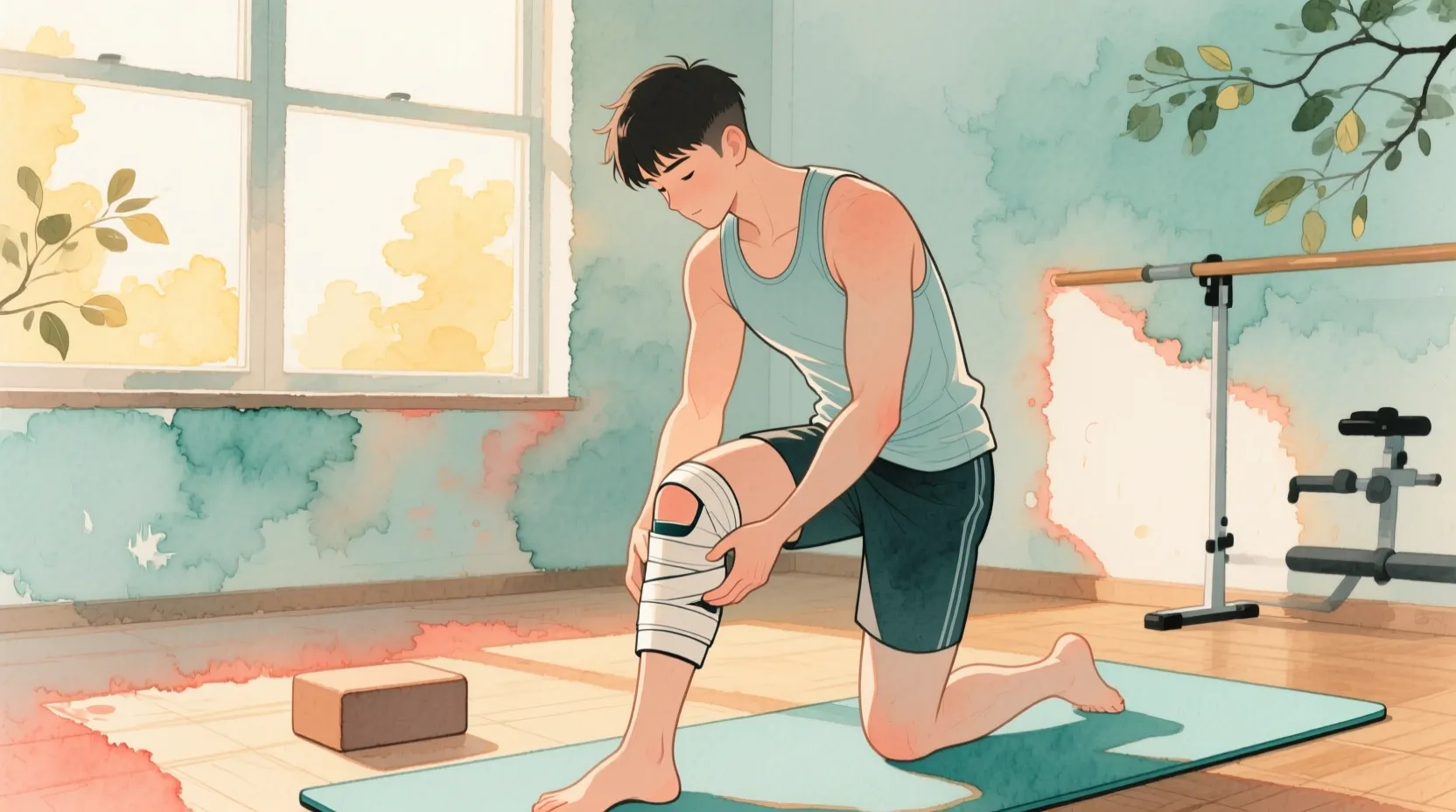Back Pain Relief Creams: A Guide to What Works
When you’re standing in the pharmacy aisle, the wall of options for back pain can be overwhelming. Gels, creams, patches, and sprays all promise fast relief, but how do you know which one will actually work for you? If you’re dealing with a nagging ache or a sharp muscle strain, it’s natural to feel anxious and just want something—anything—to ease the discomfort without having to take another pill. Topical pain relievers can be an excellent first line of defense, but choosing the right one depends on understanding what’s inside the tube.
As a medical writer specializing in orthopedics, my goal is to help you navigate these options with confidence. This guide will explain in simple terms how back pain relief creams work, what the different active ingredients do, and how to use them safely. We will look at the medical evidence behind these products to help you make an informed choice. Think of this as a conversation to cut through the marketing noise and focus on what can genuinely provide the relief you’re looking for.
Key Takeaways
- Creams Work Locally: Unlike pills that affect your whole body, topical creams deliver medication directly to the painful area, which can mean fewer systemic side effects.
- Ingredients Matter Most: The effectiveness of a cream depends entirely on its active ingredient. Understanding the difference between an NSAID, a counterirritant, and an anesthetic is key.
- Match the Ingredient to Your Pain: Anti-inflammatory creams (NSAIDs) are often best for underlying inflammation like arthritis, while counterirritants (menthol) can be great for muscle soreness.
- Safety First: Never apply pain creams to broken skin, and do not use a heating pad over an area where you’ve applied cream, as this can cause burns.
- They Are Not a Cure: Pain relief creams are excellent for managing symptoms but do not fix the underlying cause of chronic back pain. They are one part of a larger treatment plan.
- Know When to See a Doctor: If your pain is severe, accompanied by numbness or weakness, or doesn’t improve after a week of self-care, it’s time to seek a professional diagnosis.
How Do Topical Creams Work for Back Pain?
It can seem almost too simple: rub a cream on your skin and the pain underneath gets better. But there is a clear medical principle at work. Topical analgesics (the medical term for pain-relieving creams) are designed to penetrate the outer layers of the skin to reach the muscles and joints below.
Delivering Medicine Through the Skin
Your skin is a formidable barrier, but it’s not impenetrable. The active ingredients in pain relief creams are formulated in a base (like a cream, gel, or lotion) that helps the drug molecules pass through the skin. Once absorbed, they can act on local nerve endings, reduce inflammation in the soft tissue, or affect blood vessels in the immediate area without needing to be absorbed into the bloodstream in large amounts.
The Benefit of Localized vs. Systemic Treatment
When you take a painkiller by mouth, like ibuprofen or naproxen, it has to be digested, absorbed into your bloodstream, and circulated throughout your entire body to eventually reach your back. This is called systemic treatment. While effective, it also exposes your stomach, kidneys, and other organs to the medication, which can lead to side effects. Topical treatments are localized, meaning they concentrate the medication right where the pain is. This approach, as noted by the Arthritis Foundation, can significantly reduce the risk of systemic side effects, making it a safer option for many people, especially for long-term use.
Decoding the Labels: Understanding the Key Active Ingredients
Don’t be swayed by brand names or fancy packaging. The most important thing to look at is the “Active Ingredients” list on the back of the box. Most creams rely on one of a few key types of ingredients.
NSAIDs (e.g., Diclofenac): The Anti-Inflammatories
NSAIDs, or nonsteroidal anti-inflammatory drugs, work by blocking the production of chemicals in your body called prostaglandins, which cause inflammation and pain. For a long time, these were only available by prescription, but now you can find diclofenac gel (e.g., Voltaren) over the counter. This is one of the most studied and evidence-backed topical ingredients, particularly for arthritis-related pain. If your back pain is linked to an inflammatory condition or joint irritation, a diclofenac gel is often a good choice.
Counterirritants (e.g., Menthol, Camphor): The “Hot & Cold” Sensation
These are the ingredients that create the classic icy or hot sensation you associate with products like Biofreeze or Icy Hot. Counterirritants don’t actually change the temperature of your skin. Instead, they work by stimulating sensory nerve endings. This creates a new sensation (cold, warmth, tingling) that overrides and distracts your brain from the underlying signal of muscle or joint pain. It’s based on a concept called the “gate control theory of pain.” They are very effective for temporary relief of muscle aches and soreness.
Salicylates (e.g., Trolamine Salicylate): The Aspirin Relatives
Salicylates are chemicals related to aspirin. When absorbed through the skin, they have mild anti-inflammatory properties. Products containing salicylates, like Aspercreme, are often used for mild to moderate pain, particularly in joints close to the skin’s surface. They are generally less potent than topical NSAIDs like diclofenac but can be a good option for those who cannot tolerate other ingredients.
Capsaicin: The Chili Pepper Pain Blocker
This ingredient is derived from chili peppers and works in a very unique way. When first applied, it often causes a mild burning or stinging sensation. With repeated, consistent use (often for several days or weeks), capsaicin depletes a chemical in nerve cells called “substance P,” which is responsible for transmitting pain signals to the brain. It can be very effective for nerve-related pain but requires patience and consistent application to work.
Lidocaine: The Numbing Agents
Lidocaine is a local anesthetic. It works by temporarily blocking the pathway of pain signals along the nerves. Creams and patches containing lidocaine (e.g., Aspercreme with Lidocaine, Lidoderm patches) essentially numb the area where they are applied. This provides temporary relief by deadening the sensation of pain. They are useful for targeted, severe pain in a small area.
How to Choose the Right Cream for Your Type of Back Pain
While there is some overlap, certain ingredients are better suited for specific types of pain. A proper diagnosis from a doctor is always best, but here are some general guidelines.
For Aching Muscles and Overexertion
If your back pain is from a muscle strain, a long day of yard work, or starting a new exercise routine, the pain is likely muscular. For this type of acute pain, counterirritants (menthol, camphor) are often an excellent choice for immediate, soothing relief. Lidocaine can also be effective at numbing a particularly sore muscle knot.
For Joint Pain and Arthritis in the Spine
If your pain feels deeper, is related to stiffness, and might be caused by osteoarthritis in the facet joints of your spine, an anti-inflammatory cream is likely the best choice. Topical NSAIDs (diclofenac) directly target the inflammation in those joints and have strong clinical evidence supporting their use for arthritis pain, as confirmed in studies cited by the National Institutes of Health.
5 Steps to Using Pain Relief Creams Safely and Effectively
To get the most benefit and avoid potential problems, it’s critical to use these products correctly. Follow these five steps every time.
Step 1: Read the Label and Follow Directions
This seems obvious, but different creams have different application instructions. Some may recommend use three to four times a day, while others are only for short-term use. The label is your most important guide.
Step 2: Test on a Small Area First
Before slathering a new cream all over your back, apply a small amount to your inner forearm to check for any allergic reaction, like a rash, redness, or itching. Wait at least a few hours to ensure your skin tolerates the product well.
Step 3: Apply a Thin Layer and Wash Your Hands
More is not better. Use only enough cream to apply a thin layer over the painful area and gently rub it in. Afterward, wash your hands thoroughly with soap and water. You do not want to accidentally rub these active ingredients in your eyes, nose, or mouth.
Step 4: Do Not Apply to Broken or Irritated Skin
Never apply pain relief creams over cuts, scrapes, rashes, or sunburned skin. This can cause excessive absorption of the medication and lead to skin irritation or other adverse reactions.
Step 5: Never Combine with Heat
This is the most critical safety rule. Do not use a heating pad, hot water bottle, or any form of heat over an area where you have applied a pain relief cream. Heat opens up your pores and increases blood flow, which can cause your body to absorb a dangerously high amount of the medication. It can also lead to serious skin burns.
When Are Pain Creams Not Enough? (And When to See a Doctor)
Topical creams are a fantastic tool for managing mild to moderate pain, but they have their limits. It is vital to recognize when your pain is signaling a more serious problem that requires a professional medical evaluation.
Understanding the Limits of Topical Treatments
Creams are best for pain that is localized and relatively close to the surface—in the muscles or small joints of the spine. They are unlikely to provide much relief for deep pain originating from a herniated disc or compressed nerve root, as the medication simply cannot penetrate that far. They manage symptoms; they do not cure the underlying cause.
Red Flag Symptoms That Require a Doctor’s Visit
Stop self-treating and make an appointment with your doctor if you experience any of the following:
- Pain that radiates down your leg, especially past the knee (a sign of sciatica).
- Numbness, tingling, or weakness in your legs, feet, or groin.
- Loss of bowel or bladder control (this is a medical emergency).
- Pain that is the result of a fall or injury.
- Pain that is accompanied by fever or unexplained weight loss.
- Pain that does not improve or gets worse after one week of using a topical cream.

Are Prescription-Strength Creams a Better Option?
If over-the-counter options aren’t providing enough relief, your doctor may suggest a prescription-strength topical medication. These offer a few advantages over what you can buy in a pharmacy.
Higher Concentrations and Combination Formulas
Prescription topicals can contain higher percentages of active ingredients, such as diclofenac or lidocaine, for more potent relief. A doctor can also prescribe creams that combine multiple types of ingredients—for example, a cream that includes both an anti-inflammatory and a nerve-numbing agent to tackle pain from multiple angles.
The Role of Compounding Pharmacies
In some cases, a doctor may send a prescription to a special compounding pharmacy. These pharmacies can create customized pain creams tailored specifically to your needs, mixing several different medications into a single, transdermal base. This allows for highly personalized treatment that you cannot find on a store shelf.
Next Steps: A Tool, Not a Total Solution
Navigating the world of back pain relief creams doesn’t have to be a guessing game. By understanding the active ingredients, you can move past the marketing hype and choose a product that is scientifically suited to your type of pain. For muscle soreness, counterirritants can provide excellent comfort. For joint-related inflammation, a topical NSAID like diclofenac is a well-proven option. Always remember that safety is paramount—never combine these creams with heat and always follow the directions.
Most importantly, view these creams as one valuable tool in your larger back care toolbox, not a total solution. Lasting relief comes from addressing the root cause of your pain. If your pain is persistent, severe, or worrying you, the best next step is always to have a conversation with a qualified healthcare provider. They can provide an accurate diagnosis and develop a comprehensive plan that may include physical therapy, exercise, and, when appropriate, the right topical cream to help you on your journey back to a more comfortable, active life.
Medically reviewed by Dr. Sarah Jenkins, MD, Board-Certified Orthopedic Surgeon.
Frequently Asked Questions
Q – What is the strongest over-the-counter back pain cream?
A – The term ‘strongest’ depends on your type of pain. For inflammation-related pain (like arthritis), diclofenac gel (an NSAID) is generally considered the most effective evidence-backed option. For numbing severe, localized pain, creams with the highest available percentage of lidocaine (4%) are very potent.
Q – Can I use a heating pad with pain relief cream?
A – No, you should never use a heating pad or any external heat source with a pain relief cream. Heat increases absorption of the medication through the skin, which can lead to dangerously high levels in your system and can also cause serious skin burns. This is a critical safety warning.
Q – How long does it take for back pain cream to work?
A – Counterirritant creams with menthol often provide a cooling sensation and relief within 15-30 minutes. Anesthetic creams with lidocaine also work fairly quickly. Anti-inflammatory creams like diclofenac may take several hours to have an effect and often show their best results after several days of consistent use.
Q – Are “natural” creams like arnica or CBD effective for back pain?
A – Many people find relief with these products, but the clinical evidence is less robust compared to FDA-approved ingredients like diclofenac or lidocaine. Arnica is a popular homeopathic remedy for bruising and muscle soreness. The research on topical CBD is still emerging but shows some promise for pain and inflammation.
Q – Do I need a prescription for a powerful back pain cream?
A – Not always. Over-the-counter options, such as diclofenac 1% gel and lidocaine 4% cream, are quite effective. However, a doctor can prescribe higher concentrations of these ingredients or create customized combination creams through a compounding pharmacy for more complex or severe pain.




